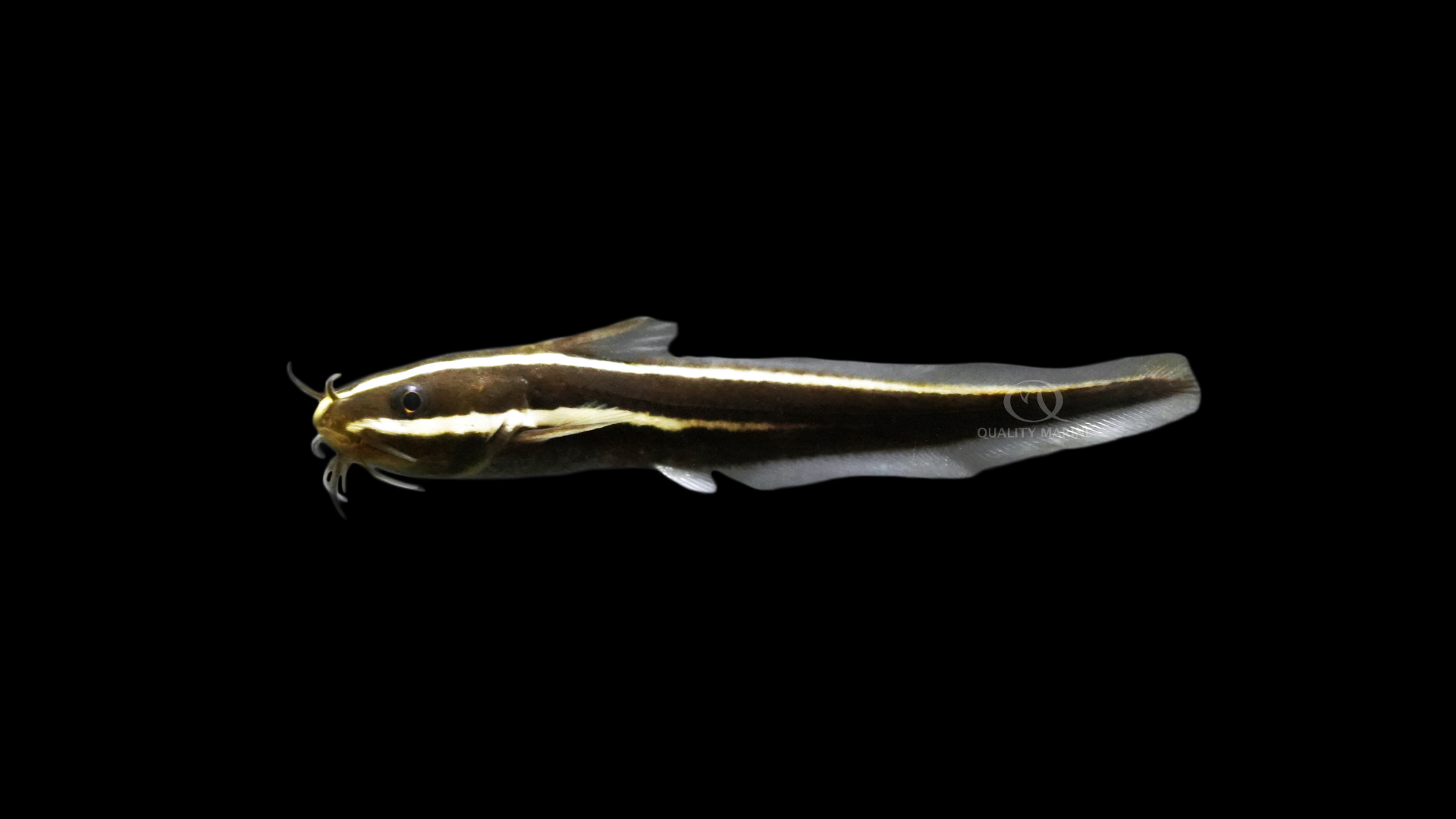The Tightest School of Fish in an Aquarium

As marine aquarium hobbyists, we don't often think about catfish in an aquarium. This is somewhat odd, as the freshwater side of the hobby (where nearly all of us start) is loaded with cool catfish to utilize in a display. There is one commonly available, but wildly under utilized species for marine fish tanks and it is the Coral Catfish, Plotosus lineatus.
Coral cats are extraordinarily hardy fish with the most ridiculously tight schools you've ever seen; as juveniles they school so tight it looks like a zebra striped eely baitball. There is a myriad of amazing videos online of this behavior. There are also instances of juvenile Bluestpot Trevally hiding in the schools of Catfish, using them as protection. As the Cats age, this behavior fades somewhat; adults are still sometimes found in groups, but the number of fish is fewer, and finding them singly is just as common. Plotosus lineatus are common throughout the tropical Indo-Pacific, ranging from the East coast of Africa to the central Pacific. They are usually found in shallow water where they prefer habitats like mud and sand flats, seagrass and algae beds. The waters they prefer are so shallow that occasionally adults will be seen exposed at high tide, heads poking out of burrows and crevices they hide in.
In the aquarium Plotosus lineatus is famous for two things. Their incredible hardiness and their unreal schooling. This schooling behavior is unlike anything else you can see in a home aquarium. But they are also a great aquarium fish. They are totally uninterested in corals and develop interesting personalities as they age. They are tolerant of a wide variety of aquarium conditions and resistant to most common aquarium maladies.
Conversely, they will eat anything they can fit in their mouths; this includes all your clean up crew (yes, even snails) and small fish. As they age, they will occasionally even consume each other. This is to be somewhat expected, though well fed individuals seem to engage in this less. Many hobbyists start with a group of 12-15 and expect to have three or four a display a few years down the road. Their max lifespan is around six to seven years, but the average in the wild is closer to two; in the aquarium, obviously they face dramatically fewer threats and you can expect them to live up to 5 years or so; at this age, they may be 10 inches long but pretty sedentary, so a huge amount of space isn't a requisite. As they age, some will lose their striping entirely, becoming a primarily black fish, while some will maintain this striping, but it will be slightly less stark.
The remaining elephant in the room is this fish's venomous spines. Like nearly all catfish, the Coral Catfish has 3 venomous spines. There is a spine in each pectoral fin (the one by the gills) and a spine at the leading edge of the dorsal fin (the big fin on top). The barbels (whiskers) are completely harmless; they are part of a sensory array that allows the fish to hunt in conditions with lower visibility. The venom is very painful if you step on one or get stuck while handling them incautiously. Large scale studies have been done on this in Europe as this species is now an invasive in the Mediterranean Sea. In 100% of the cases, no one needed to go to a hospital. A previous reports of a fatalities from this fish have not been corroborated, although it is possible that someone could have an intense allergic reaction to any venom. Even bee stings can kill someone if they are allergic to bee venom. Obviously, at a minimum, special attention to handling these fish should be taken to avoid being stung, it hurts.
Do you want a Coral Cat? It is an ideal fish for the people with a large predator style tank that want a schooling fish to add dither, without those fish getting constantly consumed. Also, if you're a person who likes venomous fish, this is a gorgeous one, that looks really different than the rest of the fish commonly available to you. For everyone else, they are easy to feed, taking just about anything you toss at them, they are very hardy, and nothing, nothing in the aquarium world looks like a school of these in a fishtank. If you're interested, ask your LFS about getting you a dozen of them from Quality Marine.
https://pubmed.ncbi.nlm.nih.gov/28980497/
https://www.fishbase.se/summary/Plotosus-lineatus.html
https://fishesofaustralia.net.au/home/species/2766
https://thekidshouldseethis.com/post/juvenile-striped-eel-catfish-plotosus-lineatus
http://www.wildsingapore.com/wildfacts/vertebrates/fish/plotosidae/lineatus.htm